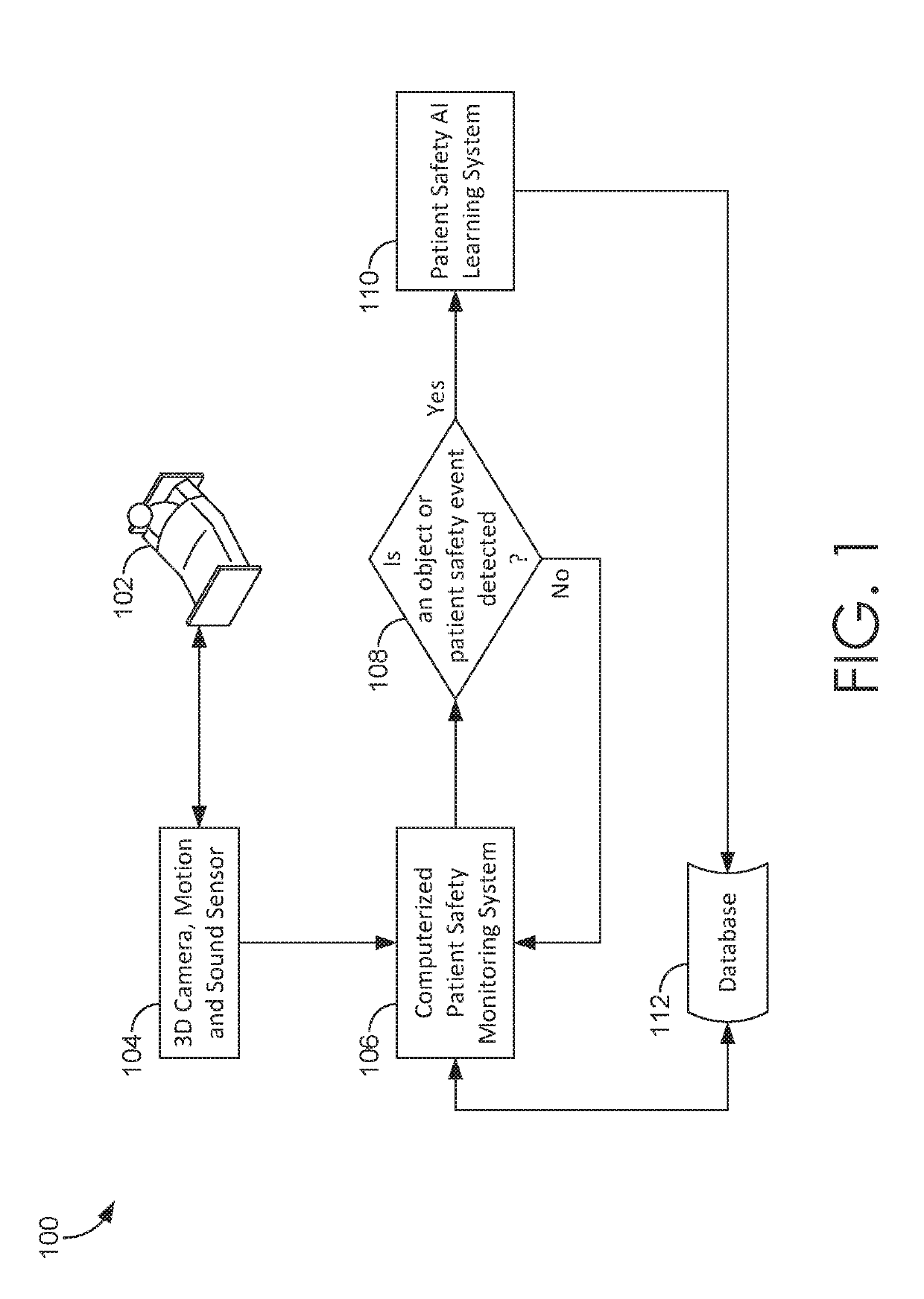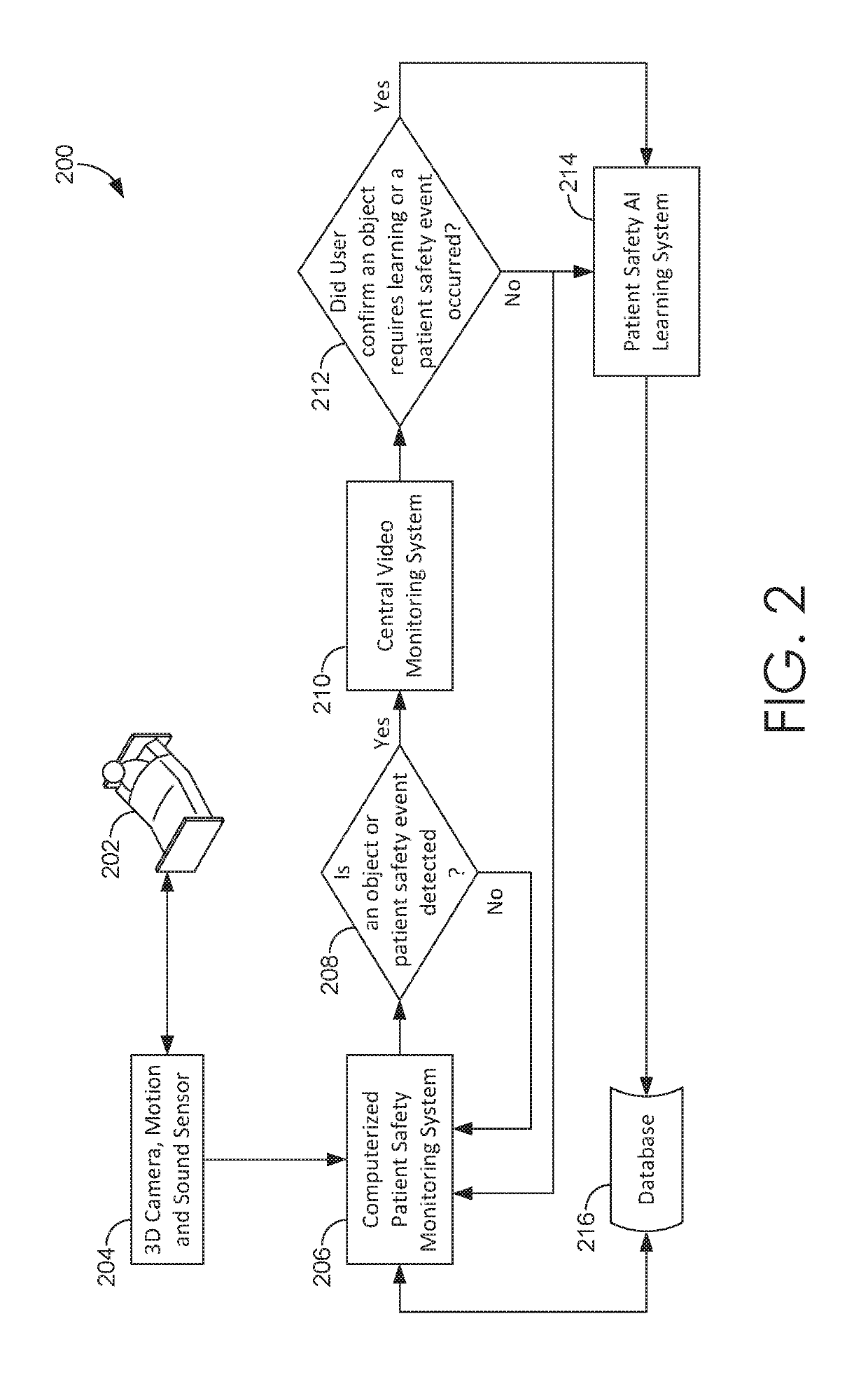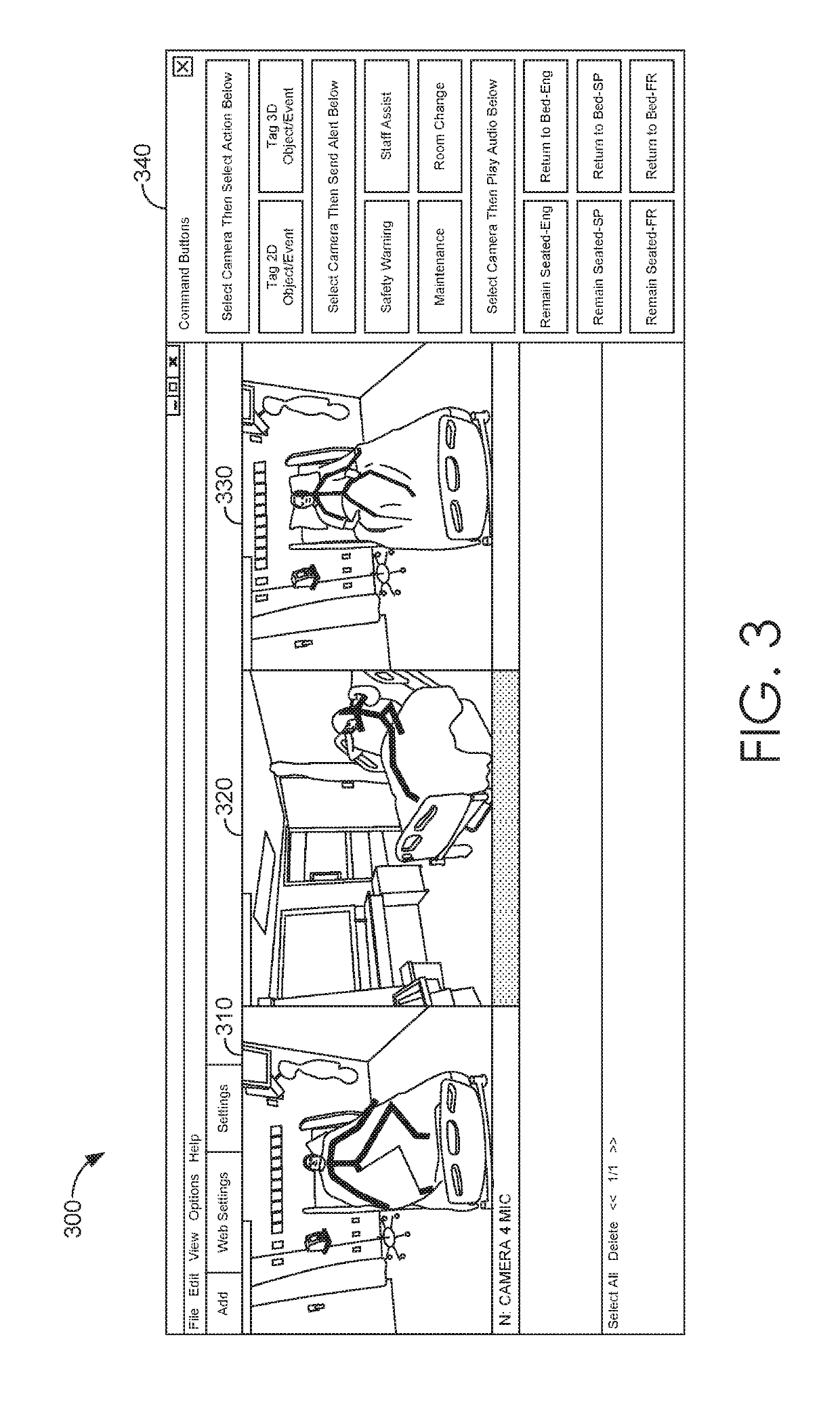Utilizing artificial intelligence to detect objects or patient safety events in a patient room
a technology of patient room and artificial intelligence, applied in the field of utilizing artificial intelligence to detect objects or patient safety events in the patient room, to achieve the effect of reducing false alerts, enhancing safety issue recognition capabilities of the system, and enhancing safety issue recognition capabilities
- Summary
- Abstract
- Description
- Claims
- Application Information
AI Technical Summary
Benefits of technology
Problems solved by technology
Method used
Image
Examples
Embodiment Construction
[0015]As noted in the Background, medical facilities, such as hospitals, face many challenges in addition to simply caring for patients. For example, securing patients and preventing safety events (e.g., stroke, seizure, getting out of bed, etc.) from occurring consumes many resources and current methods lack effectiveness. Although some medical facilities utilize cameras and / or sensors to monitor patients, current systems require subjective decision-making and are prone to error by the personnel monitoring the data received from the cameras and / or sensors. Additionally, in some situations, a patient may obtain an object the particular patient is not allowed (e.g., a gift from a visitor that might present health or safety risks to the patient) that the current methods are unable to automatically detect. Accordingly, overall security for patients and equipment suffers and the many resources currently being utilized are wasted.
[0016]The subject matter of the present invention is descr...
PUM
 Login to View More
Login to View More Abstract
Description
Claims
Application Information
 Login to View More
Login to View More - R&D
- Intellectual Property
- Life Sciences
- Materials
- Tech Scout
- Unparalleled Data Quality
- Higher Quality Content
- 60% Fewer Hallucinations
Browse by: Latest US Patents, China's latest patents, Technical Efficacy Thesaurus, Application Domain, Technology Topic, Popular Technical Reports.
© 2025 PatSnap. All rights reserved.Legal|Privacy policy|Modern Slavery Act Transparency Statement|Sitemap|About US| Contact US: help@patsnap.com



